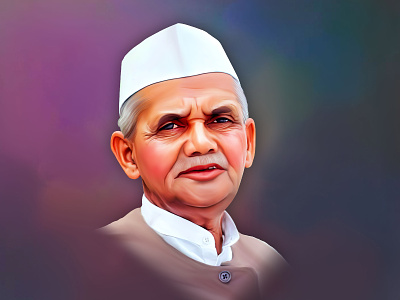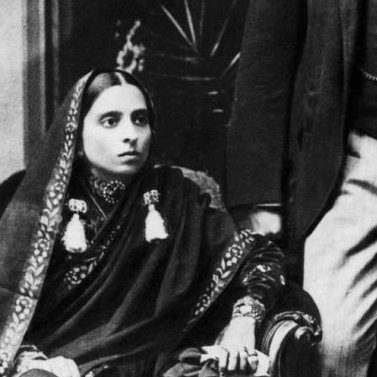Shri Lal Bahadur Shastri was brought into the world on October 2, 1904 at Mughalsarai, a little railroad town seven miles from Varanasi in Uttar Pradesh. His dad was a teacher who passed on when Lal Bahadur Shastri was just a year and half old. His mom, still in her twenties, took her three kids to her dad’s home and settled down there.
Lal Bahadur’s unassuming community tutoring was not wonderful at all yet he had a sufficiently cheerful youth regardless of the destitution that hounded him.
He was shipped off live with an uncle in Varanasi so he could go to secondary school. Nanhe, or ‘minimal one’ as he was called at home, strolled numerous miles to school without shoes, in any event, when the roads consumed in the late spring’s intensity.
Lal Bahadur Shastri’s interest in the country’s struggle to free itself from foreign rule grew as he got older. He was significantly dazzled by Mahatma Gandhi’s impugning of Indian Sovereigns for their help of English rule in India. Lal Bahadur Sashtri was just eleven at that point, yet the cycle that was end day to sling him to the public stage had previously started in his psyche.
Lal Bahadur Shastri was sixteen when Gandhiji called upon his comrades to join the Non-Collaboration Development. He chose without a moment’s delay to surrender his examinations in light of the Mahatma’s call. The choice broke his mom’s expectations. He continued to act in a manner they considered to be disastrous, and the family was unable to stop him. However, Lal Bahadur had decided. Every one of the people who were near him realize that he could never adjust his perspective whenever it was made up, for behind his delicate outside was the solidness of a stone.
Lal Bahadur Shastri joined the Kashi Vidya Peeth in Varanasi, one of the numerous public foundations set up in resistance of the English rule. There, he went under the impact of the best educated people, and patriots of the country. ‘ Shastri’ was the four year college education granted to him by the Vidya Peeth however has stuck in the personalities of individuals as a component of his name.
In 1927, he got hitched. Lalita Devi, his wife, came from Mirzapur, which is near his hometown. The wedding was customary in all faculties yet one. A turning haggle not many yards of handspun material was all the endowment. The groom would not acknowledge anything more.
In 1930, Mahatma Gandhi walked to the ocean side at Dandi and overstepped the magnificent salt regulation. The representative motion set the entire nation burning. Lal Bahadur Shastri hurled himself entirely into the battle for opportunity with hot energy. He served seven years in British prisons and led numerous defiant campaigns. It was in the fire of this battle that his steel was tempered and he developed into development.
At the point when the Congress came to drive after Freedom, the authentic worth of the clearly docile and genuine Lal Bahadur Shastri had proactively been perceived by the head of the public battle. At the point when the Congress Government was shaped in 1946, this ‘little dynamo of a man’ was called upon to assume a valuable part in the administration of the country. He was designated Parliamentary Secretary in his home Territory of Uttar Pradesh and before long rose to the place of Home Clergyman. In Uttar Pradesh, his capacity for hard work and efficiency became synonymous. He moved to New Delhi in 1951 and held a few portfolios in the Association Bureau – Clergyman for Rail lines; Serve for Transport and Correspondences; Serve for Business and Industry; Home Priest; furthermore, during Nehru’s ailment Clergyman without portfolio. He was filling in height continually. He surrendered his post as Priest for Rail lines since he felt answerable for a rail line mishap in which many lives were lost. The extraordinary motion was extremely valuable by Parliament and the country. The then State head, Pt. Nehru, talking in Parliament on the occurrence, lauded Lal Bahadur Shastri’s uprightness and high goals. He claimed that Lal Bahadur Shastri was not to blame for the events, but rather because his resignation would serve as an example of constitutional propriety. Answering to the long discussion on the Rail line mishap, Lal Bahadur Shastri said; ” Maybe because of my being little in size and delicate of tongue, individuals are well-suited to accept that I am not ready to be exceptionally firm. Although I’m not physically strong, I believe I’m not so weak on the inside.
In the middle of between his Ecclesiastical tasks, he kept on showering his getting sorted out capacities on the undertakings of the Congress Party. The avalanche triumphs of the Party in the Overall Appointment of 1952, 1957 and 1962 were in an exceptionally enormous measure the consequence of his total recognizable proof with the reason and his hierarchical virtuoso.
Lal Bahadur Shastri had worked tirelessly for more than thirty years. Over this period, he came to be known as a man of incredible trustworthiness and capability. Modest, lenient, with incredible inward strength and determination, he was a man of individuals who figured out their language. He was likewise a man of vision who drove the country towards progress. Lal Bahadur Shastri was profoundly impacted by the political lessons of Mahatma Gandhi. ” Difficult work is equivalent to supplication,” he once said, in highlights significantly suggestive of his Lord. Lal Bahadur Shastri was the best example of Indian culture, following in the footsteps of Mahatma Gandhi.



